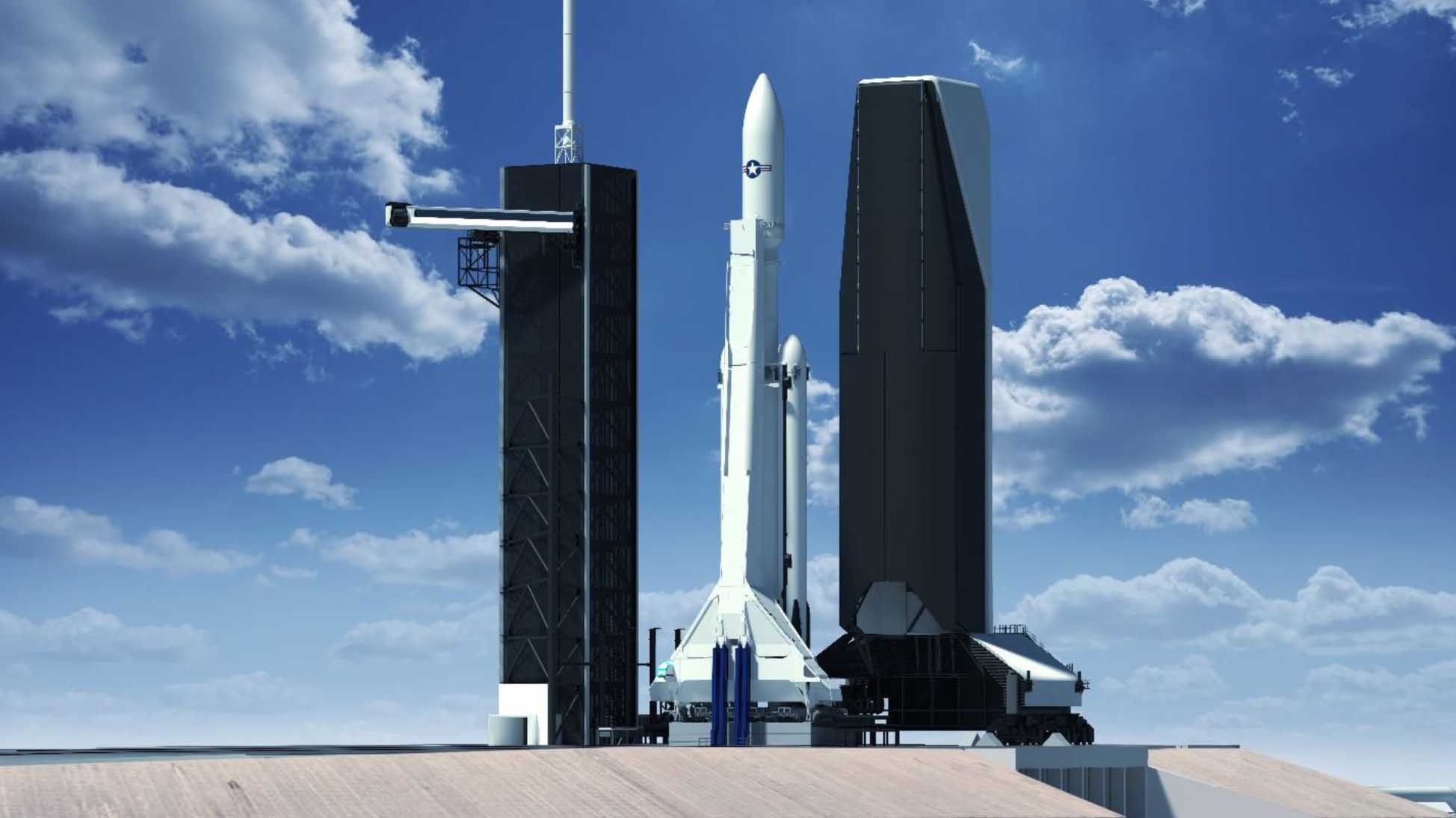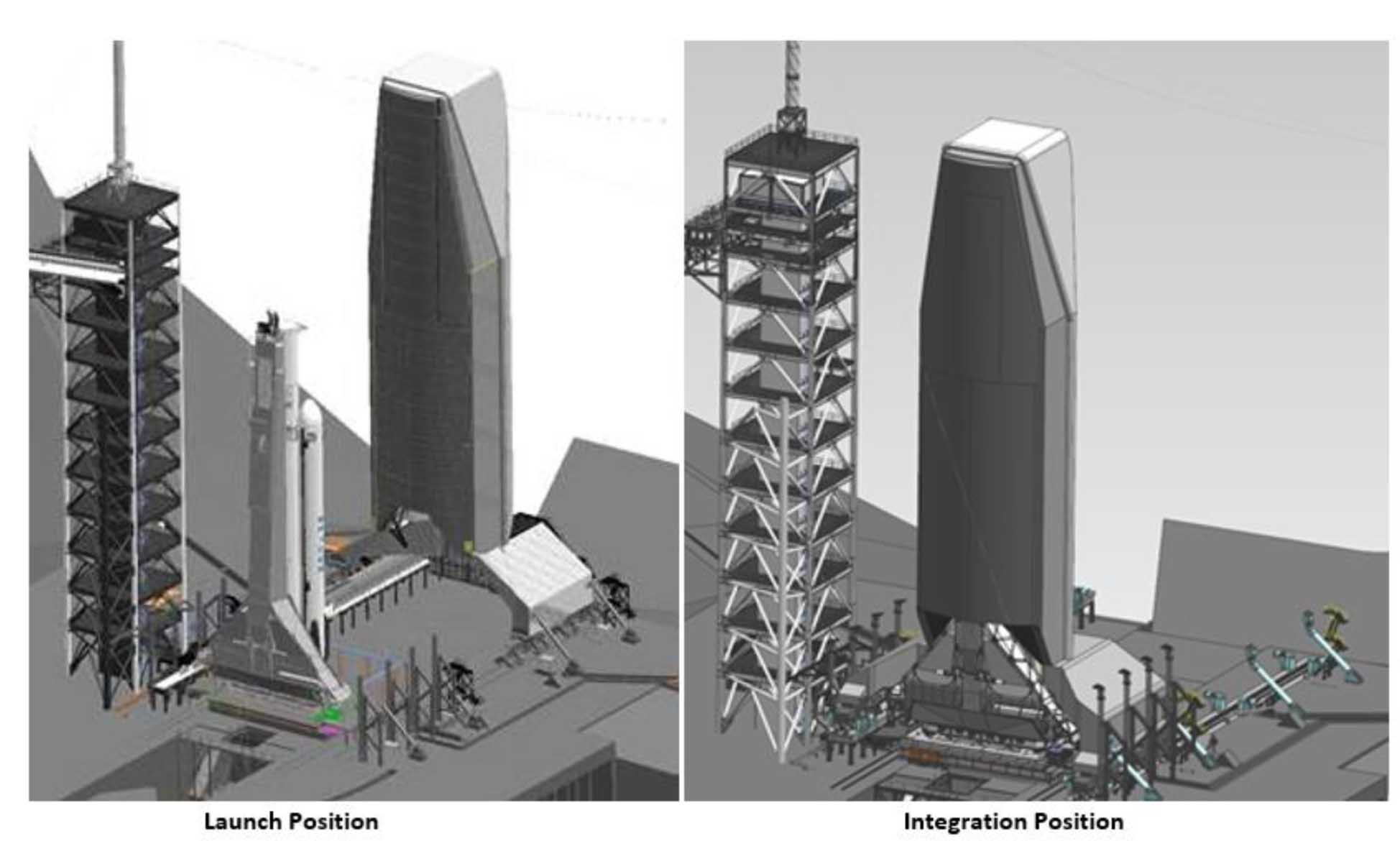SpaceX aims to launch 70 missions a year from Florida's Space Coast by 2023
They'll build a massive Mobile Service Tower for rockets, too

SpaceX is planning a huge boost to the number of rocket launches from its Florida launch sites in the next few years as the company builds its Starlink satellite megaconstellation while meeting flight demands from its customers, according to a federal environmental report.
The missions for SpaceX's Falcon 9 and Falcon Heavy rockets will also have more options than in the past, according to the report, which was first reported by SpaceNews. One change will be a new mobile service tower allowing some missions to be assembled vertically, rather than horizontally. Another will be the capability to launch to polar orbits — quite the feat, since Florida is located close to the equator and better optimized for missions that operate close to the equator. SpaceX also plans to test recovering payload fairings as the company pushes for greater mission reusability.
By 2023, the company wants to launch 70 missions a year from its two Florida launch sites at the Kennedy Space Center and nearby Cape Canaveral Air Force Station, using Falcon 9 and Falcon Heavy rockets. This rate is a seven-fold increase from the 11 missions SpaceX put into orbit in 2019, and almost double the 38 planned launches in 2020. That information comes from a draft environmental assessment published Thursday (Feb. 27) by the Federal Aviation Administration's Office of Commercial Space Transportation.
Video: Watch SpaceX launch 60 new Starlink satellites!
Related: See the evolution of SpaceX's rockets in pictures
"This launch schedule is based on SpaceX's anticipated need to support NASA and DoD [Department of Defense] missions, as well as commercial customers," the assessment reads in part. "In addition to its typical launch trajectories, SpaceX is proposing … to include a new Falcon 9 southern launch trajectory to support missions with payloads requiring polar orbits. SpaceX estimates approximately 10 percent of its annual Falcon 9 launches would fly this new southern launch trajectory."
SpaceX has two launch sites in Florida. One is at the historic Launch Complex 39A (LC-39A) of NASA's Kennedy Space Center and the other is located Space Launch Complex 40 of the Cape Canaveral Air Force Station. The company also has two rocket landing pads at the Air Force Station. Its drone ship "Of Course I Still Love You," used for rocket landings at sea, is based in Cape Canaveral, as are two payload fairing recovery ships and a Dragon spacecraft recovery ship.
The Hawthorne, California-based company also has a West Coast launchpad at California's Vandenberg Air Force Base, with a second drone ship available for offshore landings. SpaceX's first rocket, the Falcon 1, launched from Kwajalein Atoll in the Marshall Islands of the Pacific Ocean.
Get the Space.com Newsletter
Breaking space news, the latest updates on rocket launches, skywatching events and more!
Polar launches and a Mobile Service Tower

The new polar trajectory would require missions to fly alongside the Florida coast to reach the correct orbit, which could generate sonic booms. The SpaceNews report, citing a March 2019 assessment by Blue Ridge and Consulting included as an appendix to the FAA's document, says there would be a "low probability of structure damage (to glass, plaster, roofs, and ceilings) for well-maintained structures" in that area, assuming a peak overpressure of 4.6 pounds per square foot under typical flight trajectory and atmospheric conditions.
The mobile service tower would be used for a variety of launches, including security missions from the United States Air Force. The FAA states it will be built on SpaceX's existing launch pad at LC-39A at the Kennedy Space Center, standing about 284 feet (86 meters) tall and 118 feet (35 meters) wide on its longest side. Any lighting for the tower would be constructed to comply with local environmental regulations concerning sky glow, the FAA added.
SpaceX plans to recover payload fairings, in which satellites are stored during launch, "using power boats to 'chase and catch' the chutes and the fairings," FAA said. SpaceX caught half of a fairing on June 25, 2019 after a Falcon Heavy launch, and it hopes to recover three payload fairings a month between 2020 and 2025. This could lead to an environmental problem.
"During these six years, SpaceX anticipates up to 432 drogue parachutes and up to 432 parafoils would land in the ocean," the FAA stated. "SpaceX would attempt to recover all parafoils over this time period, but it is possible some of the parafoils would not be recovered due to sea or weather conditions at the time of recovery." There is a backup available if the power boats fail, which is using a salvage ship that could track down the fairing using GPS data and strobe lights located on the fairing data recorders. That said, recovery could be impossible "if sea or weather conditions are poor," the FAA said.
SpaceX's rocket fleet
Of note, the report covers activities from Falcon 9 and Falcon Heavy launches and makes few mentions of Starship, which is SpaceX's forthcoming larger rocket system that could take on even heavier launches. The FAA noted, however, that "as Starship/Super Heavy launches gradually increase over time to 24 launches per year, the number of Falcon launches would decrease."
FAA issued the report because "SpaceX's launch manifest includes more annual Falcon launches and Dragon reentries than were considered in previous … analyses," the FAA stated in the executive summary. This launch activity could affect both humans and animals in the region — which is relevant since part of the downrange launch zone is a protected area filled with marine mammals, sea turtles, and sharks, the FAA said. That said, the report does not contain a detailed list of which missions would be launched under the accelerated launch schedule.
While few details are available about SpaceX's plans, in general the company has made announcements that do point to far more launch activity in the coming years. SpaceX is in the midst of building out its Starlink constellation, which could include as many as 42,000 individual satellites. The satellites are being launched into space at a rate of one launch every few weeks.
The company is also planning to launch humans from Florida's Space Coast for the first time when its Dragon spacecraft is certified under NASA's Commercial Crew program, which could happen as early as this year. No astronauts have been launched from this area since the end of the space shuttle program in 2011. That said, the normal pace of International Space Station flights from Kazakhstan (the only spot that sends humans to space right now) is about four launches a year, which is an appreciably lower rate than the Starlink lauches.
FAA proposes to modify or issue new launch licenses to SpaceX for Falcon rocket launches, and to issue new licenses for Dragon spacecraft reentry operations. The report is open to public comment until March 20, and the FAA urges all commenters to make their remarks "as specific as possible, and address the analysis of potential environmental impacts and the adequacy of the proposed action or merits of alternatives, and any mitigation being considered."
- SpaceX's Starship and Super Heavy rocket in pictures
- Elon Musk: revolutionary private space entrepreneur
- How living on Mars could challenge colonists (infographic)
Follow Elizabeth Howell on Twitter @howellspace. Follow us on Twitter @Spacedotcom and on Facebook.
OFFER: Save at least 56% with our latest magazine deal!
All About Space magazine takes you on an awe-inspiring journey through our solar system and beyond, from the amazing technology and spacecraft that enables humanity to venture into orbit, to the complexities of space science.
Join our Space Forums to keep talking space on the latest missions, night sky and more! And if you have a news tip, correction or comment, let us know at: community@space.com.

Elizabeth Howell (she/her), Ph.D., was a staff writer in the spaceflight channel between 2022 and 2024 specializing in Canadian space news. She was contributing writer for Space.com for 10 years from 2012 to 2024. Elizabeth's reporting includes multiple exclusives with the White House, leading world coverage about a lost-and-found space tomato on the International Space Station, witnessing five human spaceflight launches on two continents, flying parabolic, working inside a spacesuit, and participating in a simulated Mars mission. Her latest book, "Why Am I Taller?" (ECW Press, 2022) is co-written with astronaut Dave Williams.









